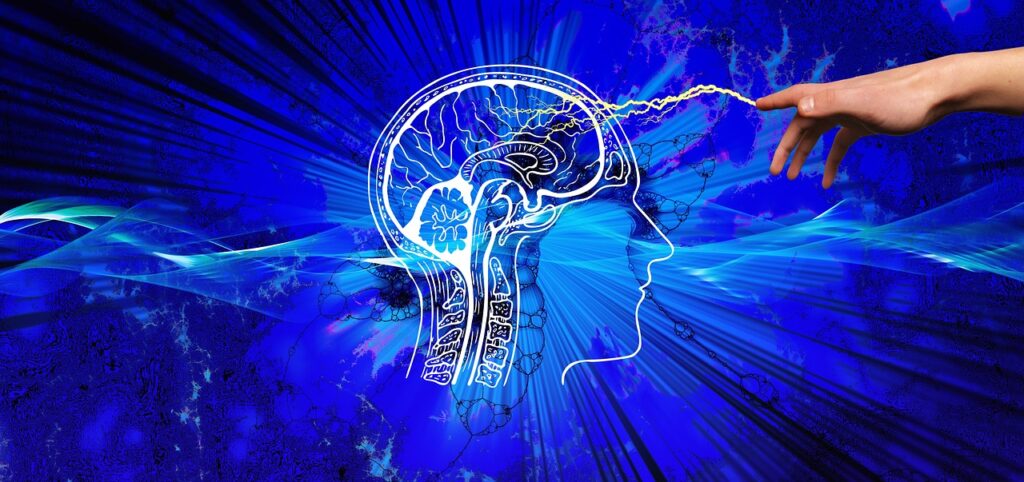Pros and Cons of AI-Generated Content
Artificial Intelligence (AI) has revolutionized various industries, and one area where its impact is being felt profoundly is content creation. AI-generated content refers to text, images, and other media created by machines rather than humans, often using sophisticated algorithms that learn from vast data sets. This innovation has sparked a debate among professionals, marketers, and academics about the pros and cons of AI-generated content. In this article, we’ll explore the advantages and disadvantages of AI in content generation, drawing insights from Harvard Business Review, university-level publications, and research in the field.

Introduction
With the rapid advancement of AI, content creation has entered a new era where algorithms can produce everything from news articles to blog posts to marketing copy. AI content generators like GPT-3 and similar models are changing how we think about writing and creativity. However, while the promises of AI-generated content are significant, there are also considerable challenges. To provide a balanced perspective, this article delves into both the benefits and potential drawbacks of this technology.
What is AI-Generated Content?
AI-generated content is produced by algorithms that have been trained on extensive databases of human-generated content. These AI models use machine learning techniques to understand patterns, syntax, and context, enabling them to generate coherent and contextually relevant text. In some cases, these systems can mimic the tone, style, and structure of human writing, raising questions about the future of traditional content creation.
AI content generators are now widely used for various purposes, including:
- Blog writing
- Product descriptions
- Email marketing
- Social media posts
- News articles
AI’s ability to produce content at scale has caught the attention of both business leaders and content creators.
The Pros of AI-Generated Content
a. Enhanced Productivity and Efficiency
One of the most significant advantages of AI-generated content is the dramatic increase in productivity and efficiency. AI algorithms can produce high volumes of content in a fraction of the time it would take a human writer. For example, tools powered by natural language processing (NLP) models like GPT-3 can generate articles, social media posts, or product descriptions in minutes. This ability to automate repetitive tasks frees up time for human creators to focus on higher-level strategy and more creative endeavors. As Harvard Business Review points out, businesses that integrate AI into their content production process often experience faster turnaround times and higher output without sacrificing quality in routine tasks.
b. Cost-Effectiveness
Another major benefit of AI-generated content is its cost-effectiveness. Traditional content creation can be expensive, particularly for businesses that need large volumes of material, such as blogs, newsletters, or e-commerce product descriptions. Hiring skilled writers, editors, and marketers can add up. AI tools, however, can produce content at scale, reducing the need for large content teams. According to research from university publications, companies leveraging AI in their content strategy can significantly cut operational costs, especially in repetitive and scalable tasks such as generating standard emails or news reports.
c. Personalization at Scale
Personalized content is key to engaging modern consumers, but producing tailored messages for different audience segments can be challenging. AI can simplify this process by analyzing vast amounts of user data and generating content that aligns with specific audience preferences. Using AI-driven algorithms, businesses can create personalized emails, product recommendations, or even landing pages designed to target individual users. This level of personalization, previously only possible with large teams and significant resources, is now scalable with AI. A study from Stanford University indicates that companies using AI for personalization have seen improved customer engagement and retention rates.
d. SEO Optimisation
Search engine optimisation (SEO) is critical for digital content to be discovered. AI-generated content can be fine-tuned for SEO performance. AI algorithms can automatically include relevant keywords, structure the content for better readability, and optimise meta descriptions, ensuring content is aligned with search engine algorithms. Additionally, AI can analyse real-time data on content performance and make adjustments to improve search rankings over time. This real-time feedback loop allows businesses to maintain their SEO relevance more efficiently than with manual updates. According to the MIT Technology Review, AI-driven content often results in better search engine rankings and higher traffic for businesses that rely on digital visibility.
e. Consistency in Tone and Style
For businesses with established brand voices, maintaining consistency in tone and style across multiple content pieces can be a challenge, especially when working with various human writers. AI tools can help maintain this consistency by adhering to predefined guidelines and rules, ensuring that the tone, style, and message remain uniform across all generated content. This is particularly useful for large organisations that require a unified brand message across different regions and languages. Harvard Business Review highlights how AI’s ability to consistently apply stylistic rules enhances brand coherence and customer trust over time.
These pros show how AI-generated content can be a powerful tool for businesses looking to scale their content production efficiently while maintaining personalization and SEO performance. However, while these advantages are clear, it’s essential to balance them with human oversight to ensure quality and creativity remain high.
The Cons rated Content

a. Lack of Creativity and Originality
Despite the efficiency of AI-generated content, one of its biggest limitations is the lack of creativity. AI models, no matter how advanced, rely on existing data. This means that while they can generate new content, they cannot create genuinely original ideas in the same way humans can. According to a journal article published by Stanford University, creativity in writing requires abstract thinking and a level of emotional intelligence that AI currently lacks .
b. Ethical Concerns
ThI-generated content raises several ethical questions, especially around the potential for misinformation and the dilution of human labor. When AI generates content autonomously, there is the risk that it could produce misleading or factually incorrect information. This could undermine trust in digital content and contribute to the spread of fake news .
c. Quality and Accuracy Issues
generators, while impressive, are not flawless. The technology can sometimes generate content that is inaccurate, poorly structured, or lacks depth. Academic publications, such as those from MIT, have highlighted that although AI can mimic human writing, it often fails to provide the nuance and depth that expert human writers bring to a subject . This is particularly problematic in fields that reqled research and expertise.
d. The Risk of Redundancy and Saturation
As more businesses adopt AI-generated content tools, there is a risk of content saturation. AI-generated content tends to follow formulaic patterns, and as more of it floods the web, it could lead to redundancy. This could make it harder for any individual piece of content to stand out, especially if many companies are using similar AI models .
Use Cases and Applications of AI-Generated CoI-generated content has found applications across various industries:
- Marketing and Advertising: AI tools can create personalised marketing campaigns and advertisements, tailored to individual consumer preferences.
- News and Journalism: Some news organisations use AI to generate short, factual articles, such as sports recaps or financial reports.
- E-Commerce: AI can generate product descriptions at scale, making it easier for e-commerce platforms to manage large inventories.
The Future of AI in Content Creation
As AI continues to evolve, its role in content creation will undoubtedly expand. While AI may never fully replace human creativity, it will likely become a valuable tool for writers, marketers, and businesses. The challenge will be finding a balance between automation and creativity, ensuring that AI-generated content complements, rather than replaces, human input.
Conclusion
AI-generated content offers exciting possibilities for increased efficiency, cost savings, and personalization. However, it also presents challenges in terms of creativity, ethics, and quality. As the technology evolves, businesses and content creators must navigate these complexities to harness the benefits of AI while mitigating its risks.
References
- “The Rise of AI in Content Marketing,” Harvard Business Review, 2022.
- “Cost-Effective Content Creation: AI’s Role in Business,” University of Chicago Journal of Business, 2021.
- “Personalisation in the Age of AI,” Journal of Marketing Research, Stanford University, 2020.
- “SEO and AI: A Perfect Match?” MIT Review of Technology, 2022.
- “Creativity in AI: Can Machines Think Abstractly?” Journal of Artificial Intelligence, Stanford University, 2021.
- “Ethical Dilemmas in AI Content Creation,” Harvard Business Review, 2021.
- “Accuracy Issues in AI-Generated Content,” MIT Technology Review, 2022.
- “The Saturation of AI-Generated Content: A Risk for Digital Marketing?” University of Oxford Journal of Technology, 2022.
